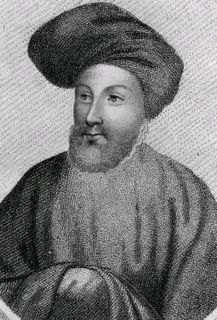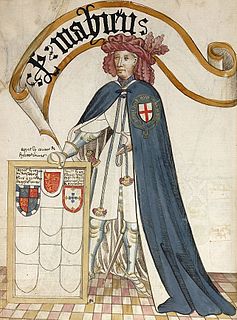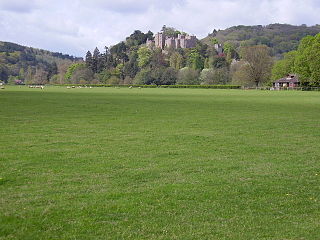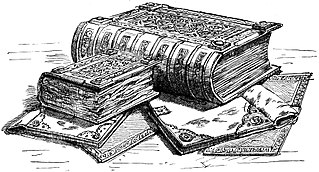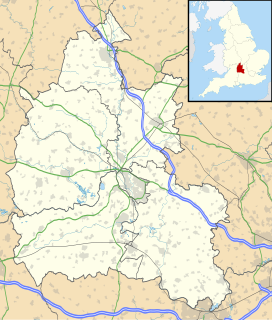
Dunster Castle is a former motte and bailey castle, now a country house, in the village of Dunster, Somerset, England. The castle lies on the top of a steep hill called the Tor, and has been fortified since the late Anglo-Saxon period. After the Norman conquest of England in the 11th century, William de Mohun constructed a timber castle on the site as part of the pacification of Somerset. A stone shell keep was built on the motte by the start of the 12th century, and the castle survived a siege during the early years of the Anarchy. At the end of the 14th century the de Mohuns sold the castle to the Luttrell family, who continued to occupy the property until the late 20th century.

Isabella of Castile, Duchess of York was the daughter of King Peter and his mistress María de Padilla. She accompanied her elder sister, Constance, to England after Constance's marriage to John of Gaunt, 1st Duke of Lancaster, and married Gaunt's younger brother, Edmund of Langley, 1st Duke of York.

Richard de Vere, 11th Earl of OxfordKG was the son and heir of Aubrey de Vere, 10th Earl of Oxford. He took part in the trial of Richard, Earl of Cambridge and Lord Scrope for their part in the Southampton Plot, and was one of the commanders at Agincourt in 1415.

Fyfield is a village in Fyfield and Tubney civil parish, about 4.5 miles (7 km) west of Abingdon. It was part of Berkshire until the 1974 boundary changes transferred it to Oxfordshire. The village used to be on the main A420 road between Oxford and Faringdon, but a bypass now carries the main road just south of the village.

Sir John Luttrell feudal baron of Dunster in Somerset, of Dunster Castle, was an English soldier, diplomat, and courtier under Henry VIII and Edward VI. He served under Edward Seymour, Earl of Hertford in Scotland and France. His service is commemorated in an allegorical portrait by Hans Eworth.

Sir Philip Courtenay of Powderham, Devon, was the senior member of a junior branch of the powerful Courtenay family, Earls of Devon.
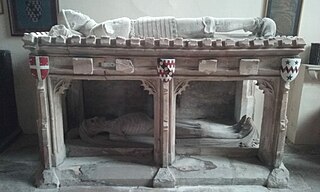
John Golafre was an English courtier and Member of Parliament.
The Manor of Shirwell was a manor in North Devon, England, centred on the village of Shirwell and largely co-terminous with the parish of Shirwell. It was for many centuries successively the seat of two of the leading families of North Devon, the Beaumonts and their heirs the Chichesters of Raleigh, Pilton, both of which families were seated at the estate of Youlston within the manor of Shirwell. The manor house which survives today known as Youlston Park is one of the most architecturally important historic houses in North Devon and exists largely in its Georgian form, but retains many impressive late 17th-century interiors.

The Bohun swan was a heraldic badge used originally in England by the mediaeval noble family of de Bohun, Earls of Hereford, and Earls of Essex.

Mohuns Ottery or Mohun's Ottery, is a house and historic manor in the parish of Luppitt, 1 mile south-east of the village of Luppitt and 4 miles north-east of Honiton in east Devon, England. From the 14th to the 16th centuries it was a seat of the Carew family. Several manorial court rolls survive at the Somerset Heritage Centre, Taunton, Somerset.

Thomas Luttrell, of Dunster Castle in Somerset, feudal baron of Dunster, was a Member of Parliament for his family's newly enfranchised pocket borough of Minehead, from 1563 to 1567. He was Sheriff of Somerset in 1570–1.
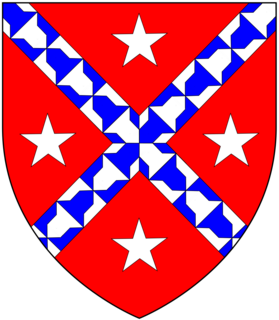
Sir John Hill of Kytton in the parish of Holcombe Rogus, and of Hill's Court in the parish of St Sidwell in the City of Exeter, both in Devon, was a Justice of the King's Bench from 1389 to 1407.
This is a list of High Sheriffs of Berkshire and Oxfordshire. One sheriff was appointed for both counties from 1248 until the end of 1566, after which separate sheriffs were appointed. See High Sheriff of Berkshire and High Sheriff of Oxfordshire for dates before 1248 or after 1566.
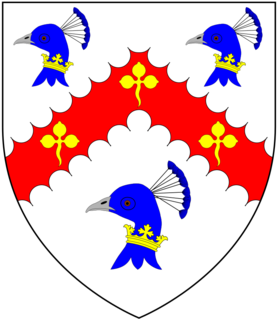
John Ridgeway of Abbots Carswell and Tor Mohun in Devon, was a lawyer who served as a Member of Parliament, twice for Dartmouth in 1539 and 1545 and twice for Exeter in 1553 and 1554.

Tor Mohun is an historic manor and parish on the south coast of Devon, now superseded by the Victorian sea-side resort of Torquay and known as Tormohun, an area within that town. In 1876 the Local Board of Health obtained the sanction of Government to alter the name of the district from Tormoham (sic) to Torquay. Although from the 19th century onwards many churches have been built in the expanding modern town of Torquay, the ancient Church of St Saviour, the parish church of Tor Mohun, survives, situated on Tor Church Road, but today serving as the Greek Orthodox Church of Saint Andrew. It contains several monuments, most notably to Thomas Ridgeway (1543–1598) of Torwood House, lord of the manor of Tor Mohun, and of the Cary families of Torre Abbey, situated a few hundred yards south-west of the church, and of Cockington Court, situated 1 1/4 miles west of the church, both within the parish.

